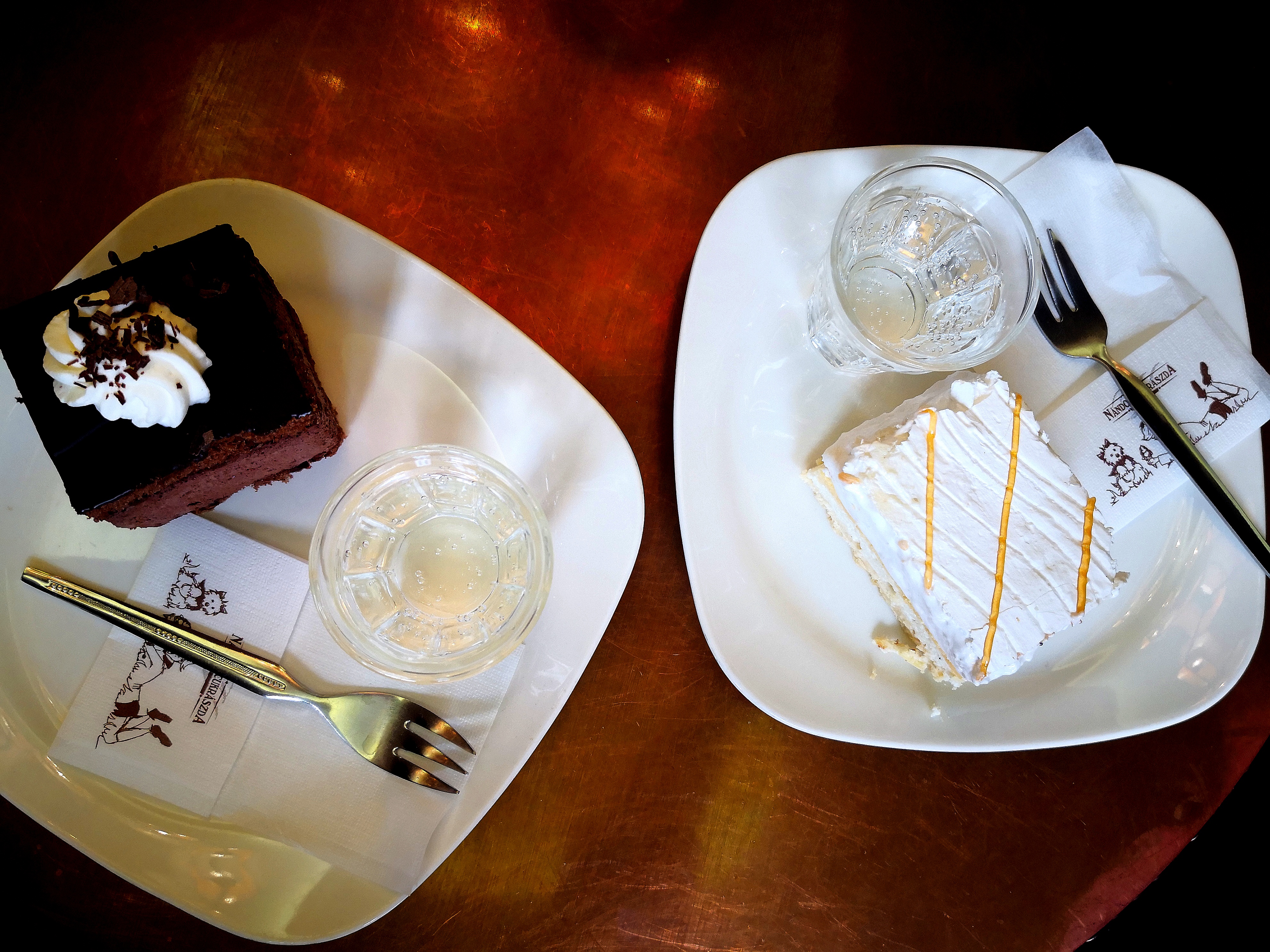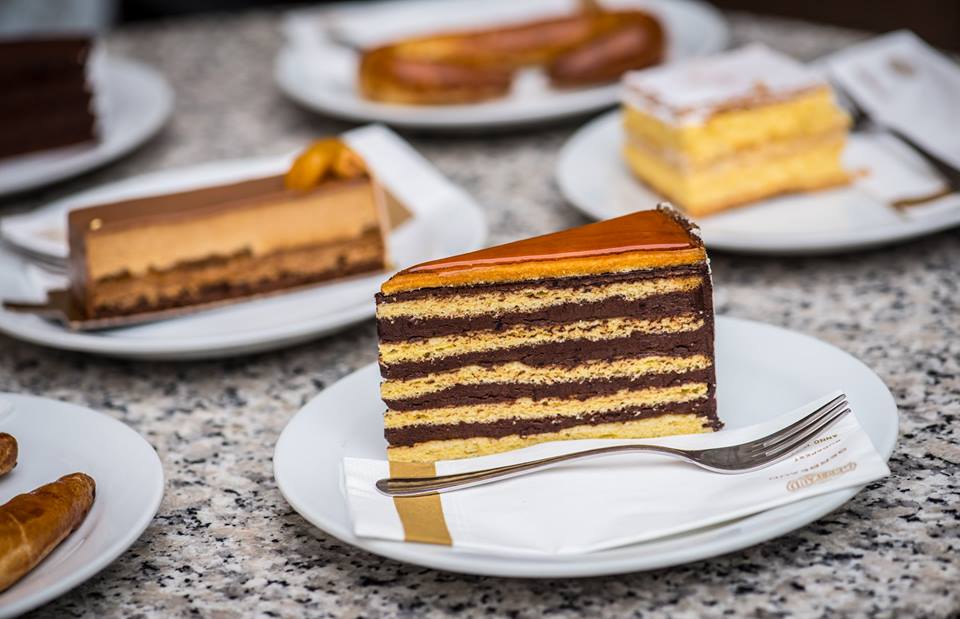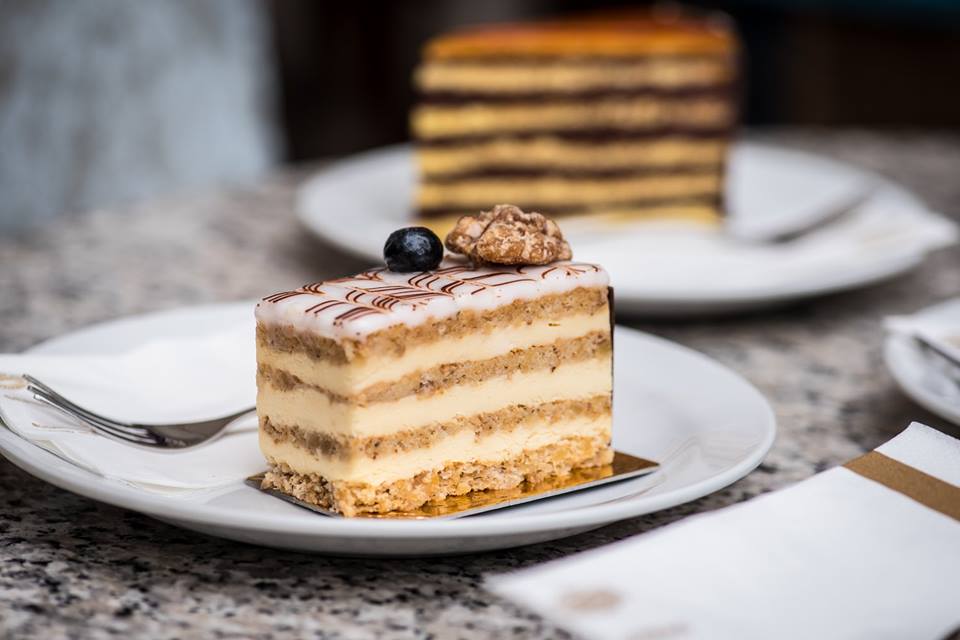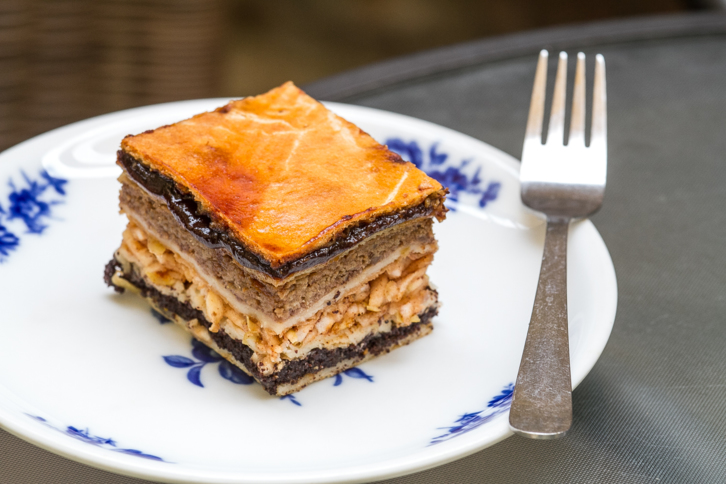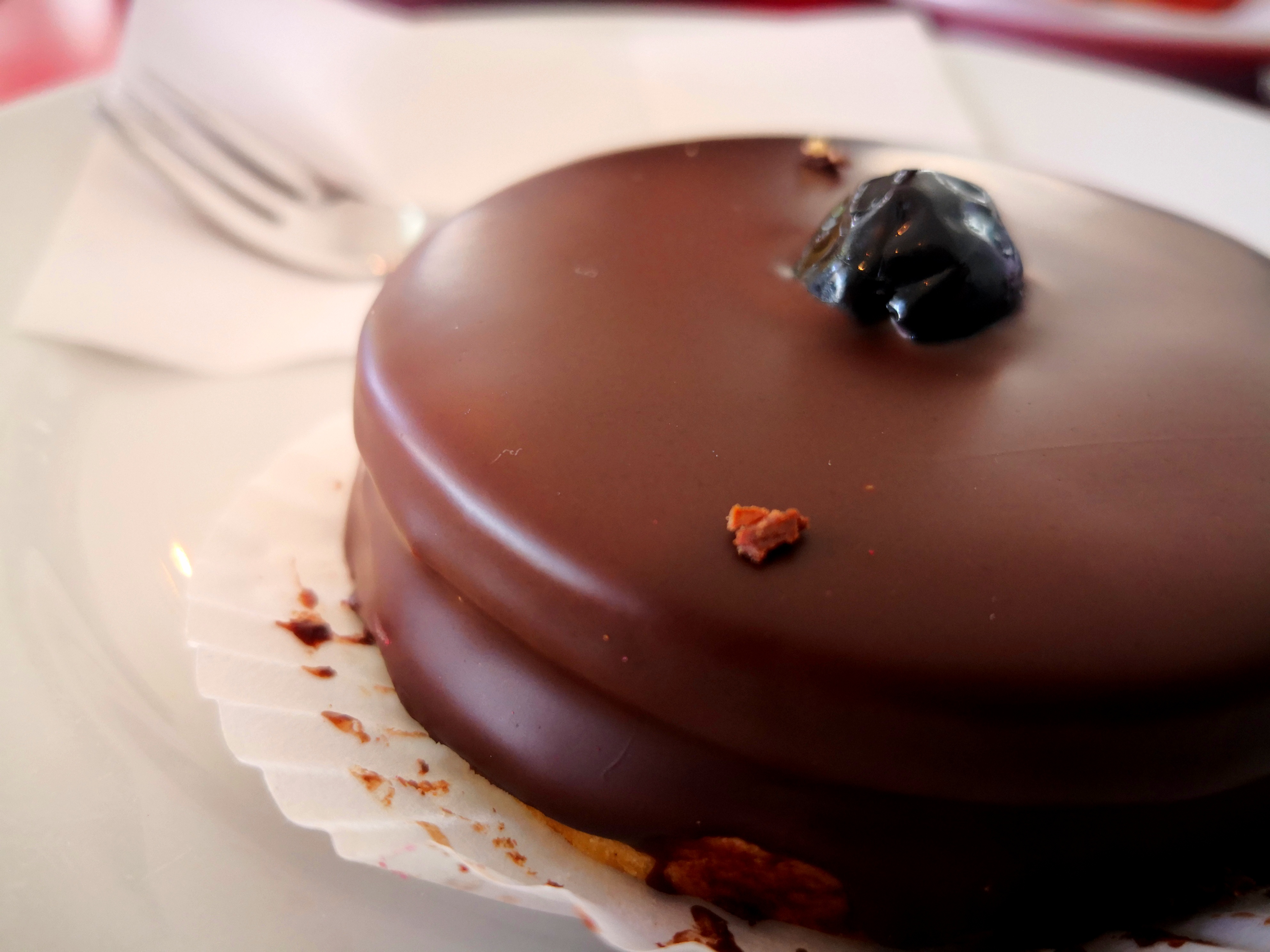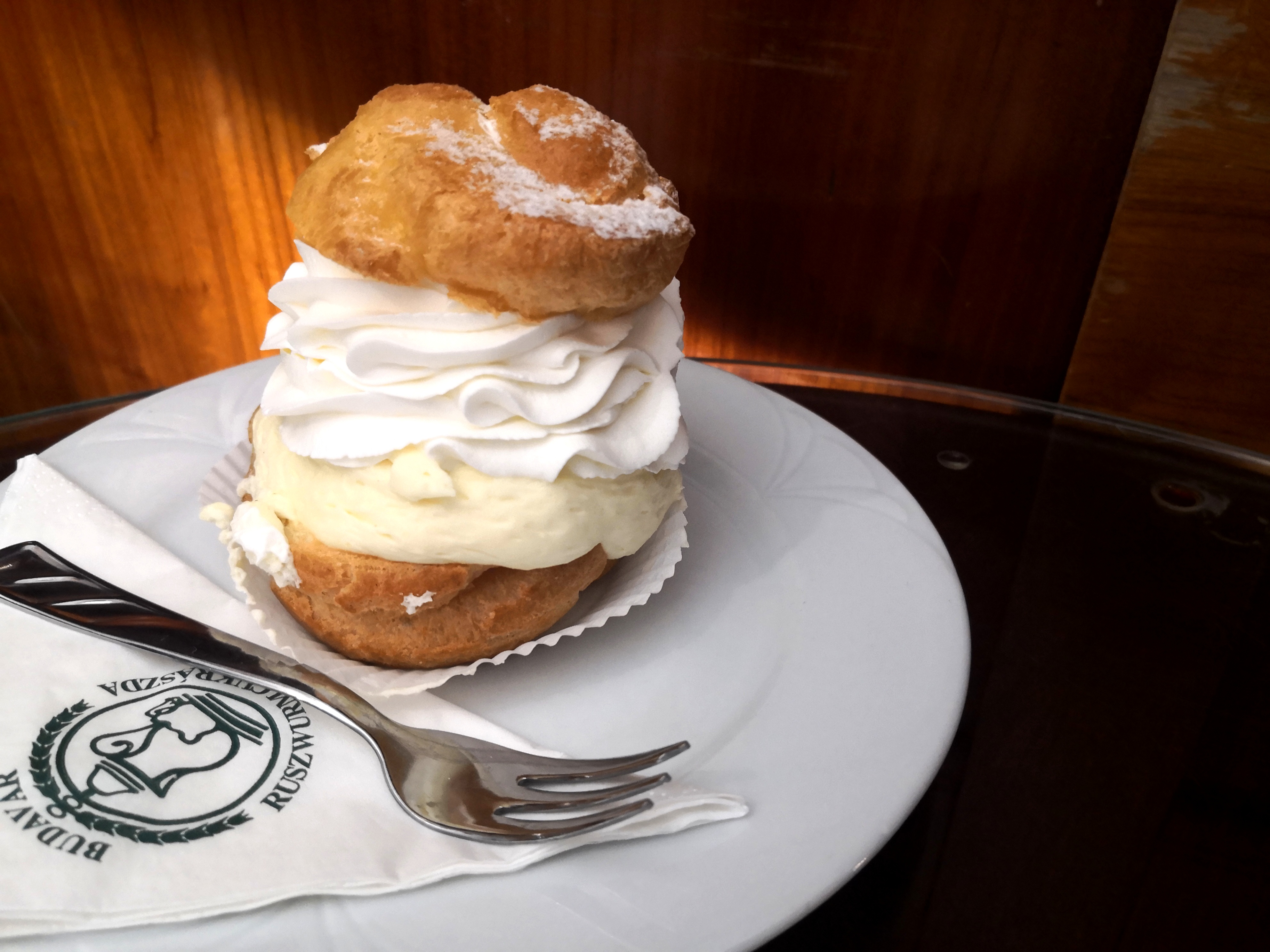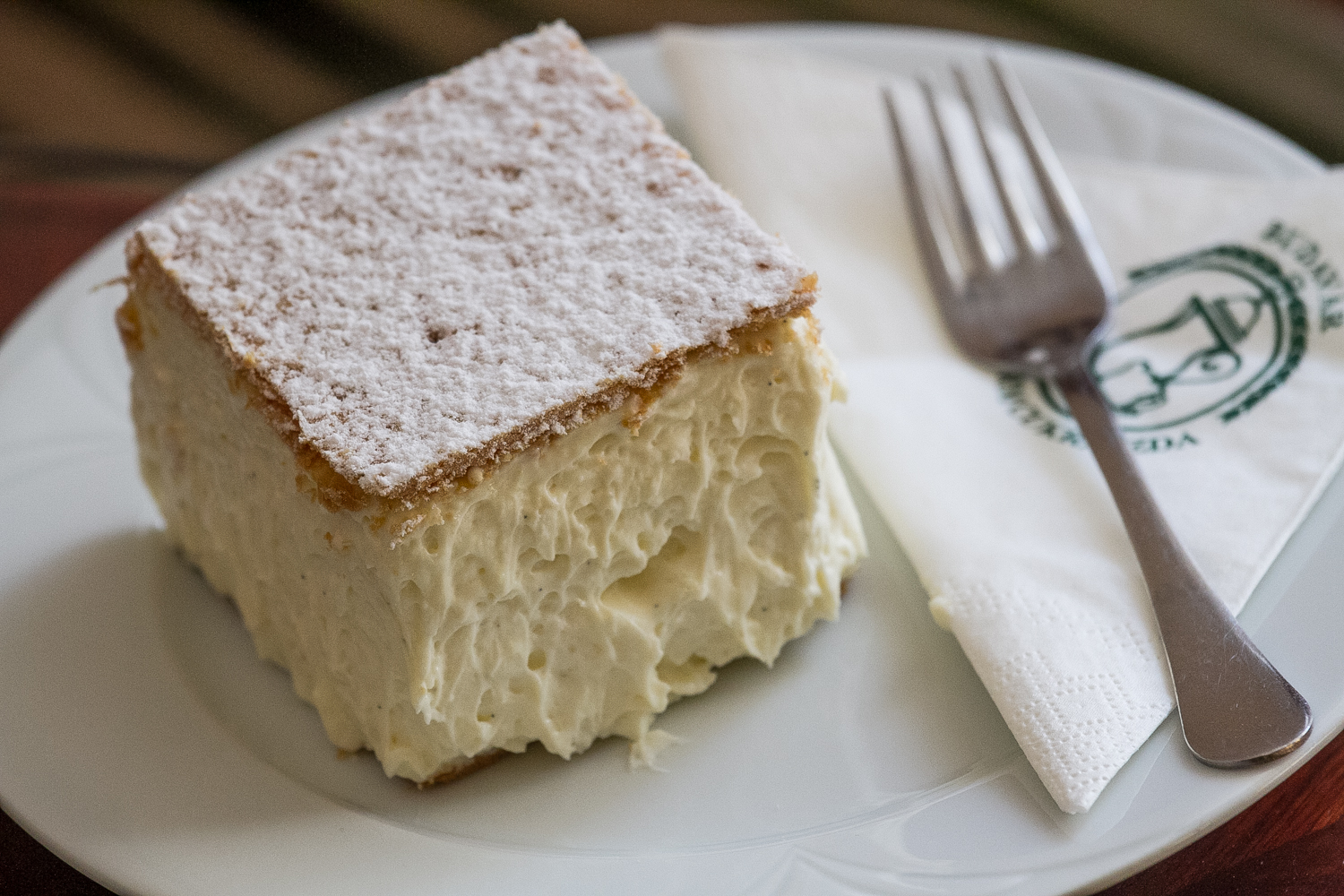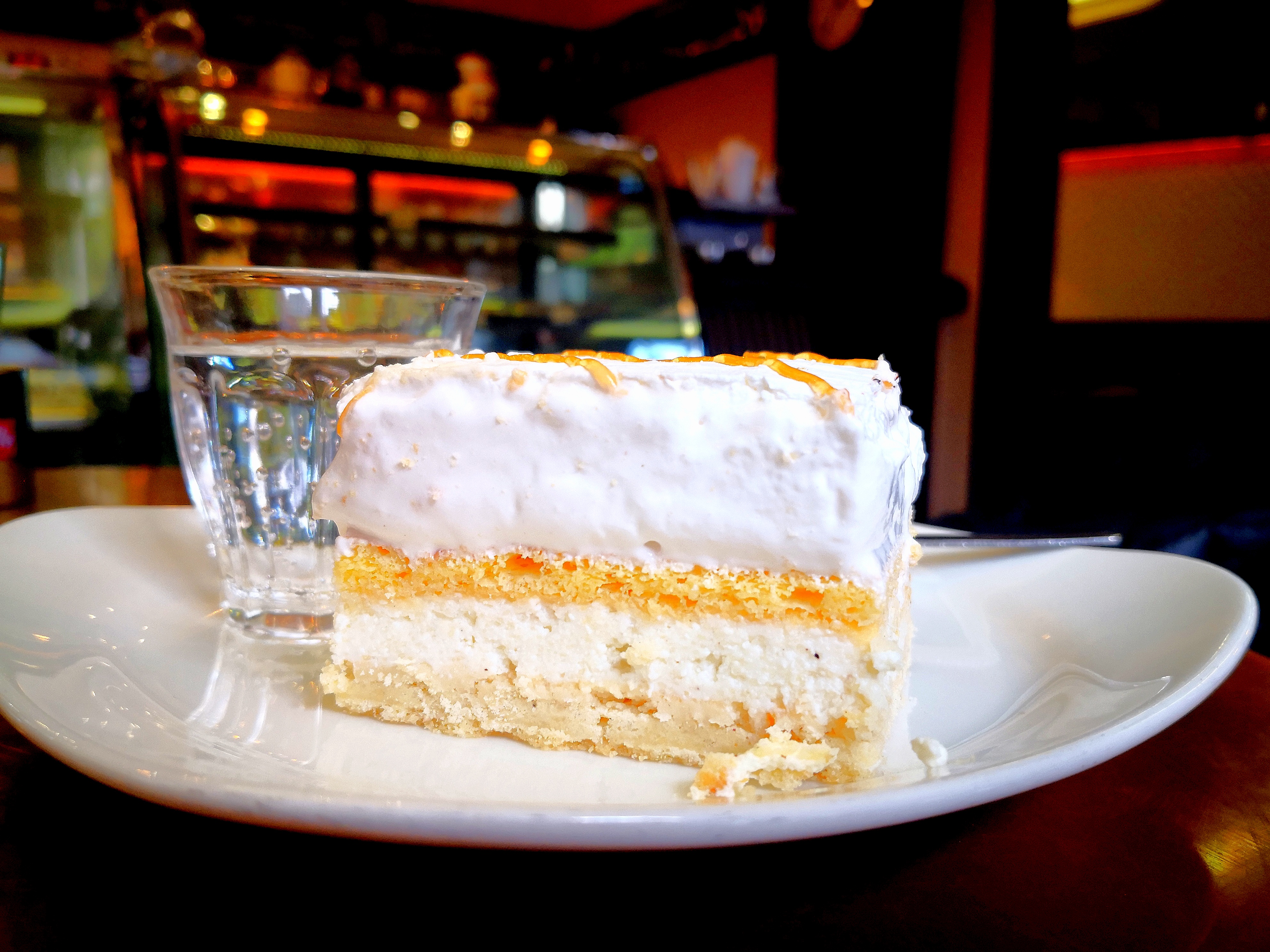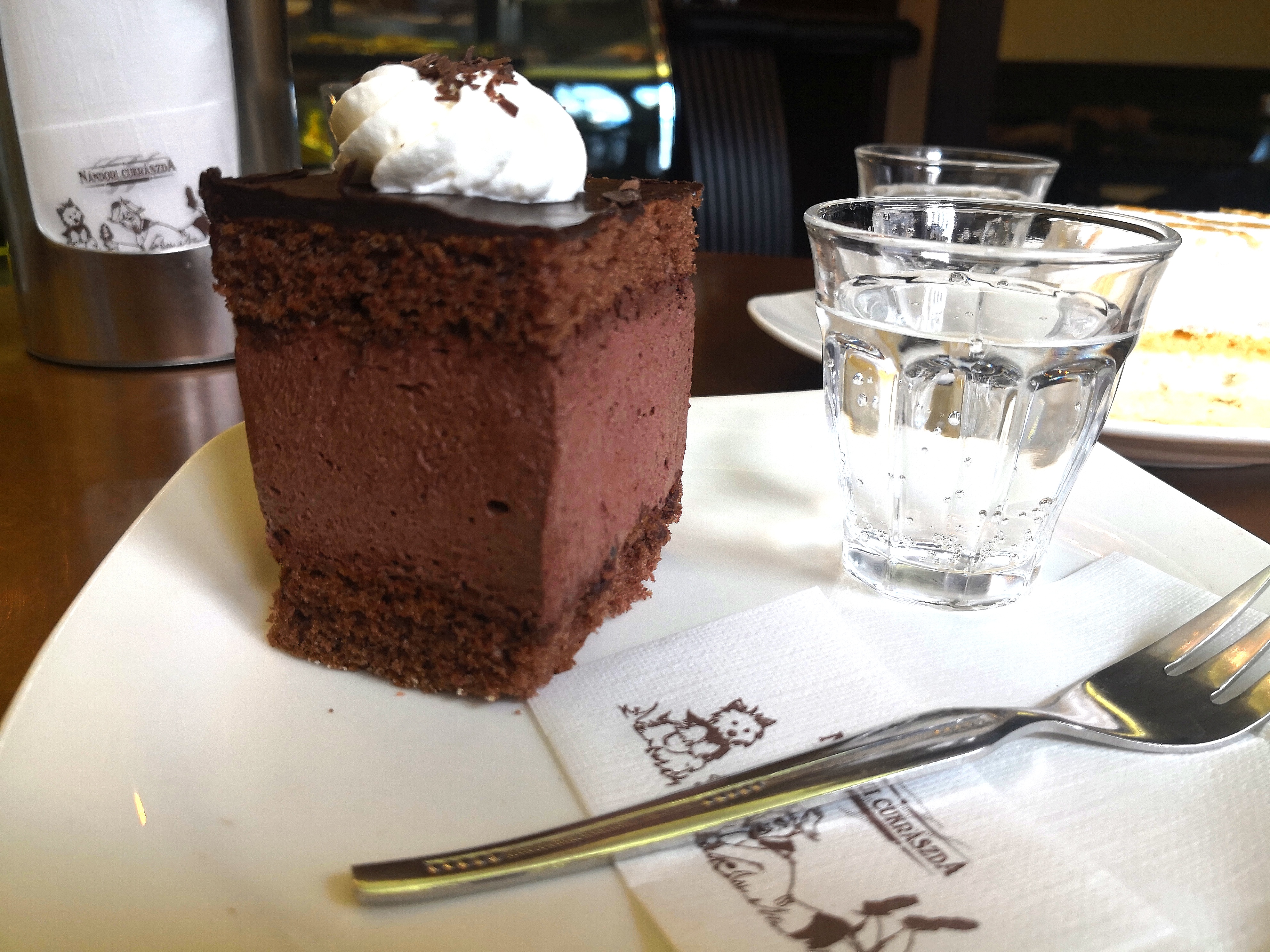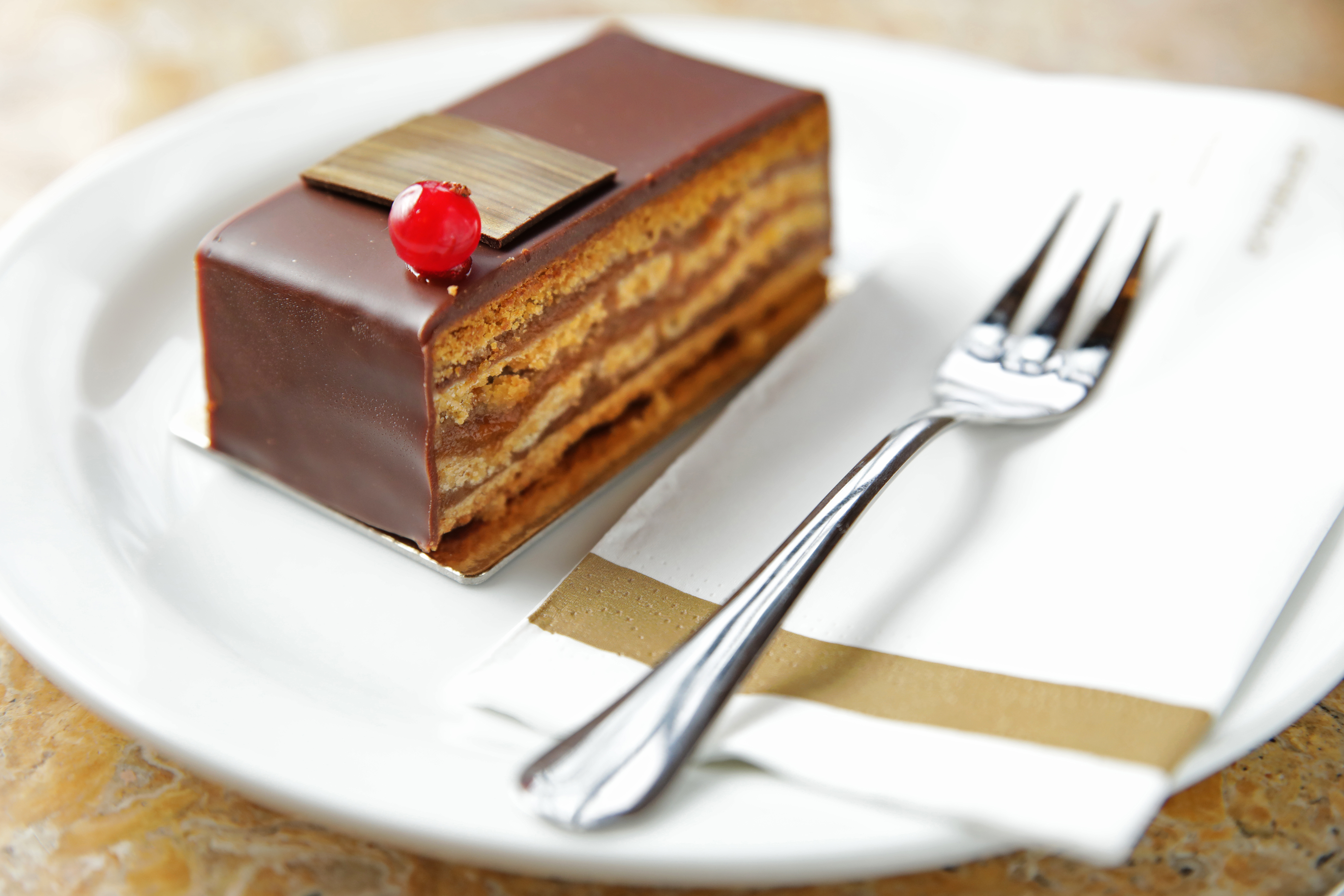1/10
Dobos torte
First baked in the 1800s and named after its inventor József C Dobos, this layered pastry is among the best-known Hungarian cakes, acclaimed for its polished appearance. Habsburg Emperor Franz Josef I and Queen Elisabeth were among the first to taste this layered sponge cake smothered with chocolate buttercream. What gives its distinguishing appearance is the thin wedges of caramel glaze on the top, best when it’s crispy, rather than gooey.
Where to try it: The iconic Gerbeaud confectionery makes it to perfection both in taste and appearance. A subtler version is available at Ruszwurm, an ideal place to pop into while on your tour around Castle District.
2/10
Esterházy torte
Hungarian noble family, the Esterházy dynasty, left Hungary a rich legacy, including a walnut-based cake that is named after them. Invented by Budapest confectioners in the late 19th century, Esterházy cake soon became a preferred dessert in the Austro-Hungarian monarchy. The best of this genre comes with vanilla cream that is sandwiched between layers of walnut-infused sponge cake and topped with a thin layer of fondant.
Where to try it: Óbuda's long-established Daubner calls it Eszty szelet and offers the cake with velvet-smooth cream. If you like your cake a bit more sweet, famed Hungarian chain Szamos is ideal for this noble treat. For a real Esterházy flavour explosion, head to the legendary Gerbeaud.
3/10
Flódni
Traditional Jewish dessert flódni is a symbol of diversity. An essential part of Hungarian gastronomy, this towering treat of multiple layers contains poppy seed, ground walnut, apple, even plum jam. It’s served in many of the city’s Jewish restaurants as well as confectioneries.
Where to try it: Heritage family-run restaurant Rosenstein sells an outstanding version of flódni, but confectioneries like Raj Ráchel’s shops and retro-style Frőhlich in the heart of Dob utca also bakes this Jewish delicacy.
4/10
Ischler
Originally an Austrian confection named after its birthplace, the famous spa town Bad Ischl, Ischler is also an indispensable part of Hungarian confectionery. Between two round-shaped cookies dipped in chocolate is a filling of jam, sour cherry or apricot. It can be covered in chocolate glazing top to bottom, but variations of Ischler involve the chocolate only enhancing the cookie on the top.
Where to try it: Found near the Kelenföld terminus of the M4 metro line, Erdős és Fiai sells two types of Ischler with apricot or sour cherry, whose milk-chocolate coating leaves a velvety sensation on the palate, nicely balanced by the lightly acidy flavour of the sour cherry added to the cake. Ischler is also irresistible at the Szamos chain. In District XIV, Smankerli sells Ischler with dark-chocolate coating and jam made of red berries.
5/10
Képviselőfánk
Hungary’s answer to the French cream puff is part of local confectionery tradition, though the origin of the Magyar version is shrouded in mystery. Rumour has it that the pastry was first served at the buffet in Parliament, hence the name képviselő (‘representative’). It is made from a light and flaky choux pastry that’s filled with vanilla cream and whipped cream.
Where to try it: Ruszwurm goes the extra mile when it comes to cream-based cakes and it prides itself on its lightweight, pleasantly sweet képviselőfánk, a long-established item on the confectionery’s menu. Jégbüfé in the city centre sells a retro variation of the delicacy.
6/10
Krémes
The Magyar’s favourite Chantilly cream cake comes with a layer of custard on a puff-pastry base. Toppings might vary and can include icing sugar, even a crispy layer of caramelised covering. While krémes is popular across Central Europe, its taste and appearance can differ from shop to shop, even within Budapest.
Where to try it: Krémes is a star treat at Ruszwurm, and no trip to the Castle District is complete without trying it there. At Kelenföld, Erdős és Fiai offers házi krémes, layered with a thick confectioner’s cream and a crispy topping.
7/10
Lúdláb
First made in Hungarian kitchens, lúdláb took its name from its triangular shape resembling goose feet – it may also feature a distinct yellow colouring beneath an egg-based layer of sponge cake. Today, chocolate defines lúdláb all around: a thin layer of sponge cake topped with cacao-infused mousse and cherries that have been soaked in some kind of brandy. The icing on the cake is the crunchy chocolate glaze.
Where to try it: It's rare to find in most cake shops, but Nándori cukrászda and Lúd Cukrászda at Klauzál market have lúdláb as part of their regular menu. Part of its heritage collection, this delicacy is available at Gerbeaud in two versions, according to a traditional and a revamped recipe.
8/10
Rákóczi túrós
Its recipe first published in the 1930s, Rákóczi túrós gained international attention at the Brussels World Fair in 1958. Its inventor, confectioner János Rákóczi, cooked up a lasting tradition: Rákóczi túrós is a staple of Hungarian dessert cuisine. A layer of shortcrust is topped with sweet curd cheese and coated with meringue lattice, often filled with apricot jam in between each section.
Where to try it: Nándori adds a touch of citrusy flavour to the sweet curd-cheese layer for its Rákóczi túrós cake. City-centre Jégbüfé by Ferenciek tere has been a go-to locale for this dessert for decades.
9/10
Rigó Jancsi
This cube-shaped chocolate sponge cake is named after Hungarian Gypsy violinist, Jancsi Rigó, who wooed and married Belgian countess Clara Ward of American origin. Legend has it that the cake was created to celebrate and honour this romantic love story. With an intense aroma of chocolate, the dessert comes with mousse, sponge and glazing, all infused with cacao. The filling may include a touch of rum and vanilla.
Where to try it: Nándori sells this lovely confection filled with a light mousse and covered with a layer of chocolate glazing. Whipped cream and chocolate shavings crown this unpretentious sweet. For an even sweeter version of Rigó Jancsi, head to traditional Hauer on Rákóczi út.
10/10
Zserbó
While bringing international fame to the graceful Budapest establishment Gerbeaud, Swiss pastry chef Emile Gerbeaud also invented what is perhaps the crown jewel of Hungarian confectionery, the zserbó cake. Traditionally made with alternate levels of ground walnut and homemade apricot jam, multiple layers of short-crust pastry are covered with a smooth chocolate glaze.
Where to try it: This simple-looking cake is elevated to artistic heights at Gerbeaud, the guardian of the original recipe. If you are on a budget, try the zserbó at Nándori.
